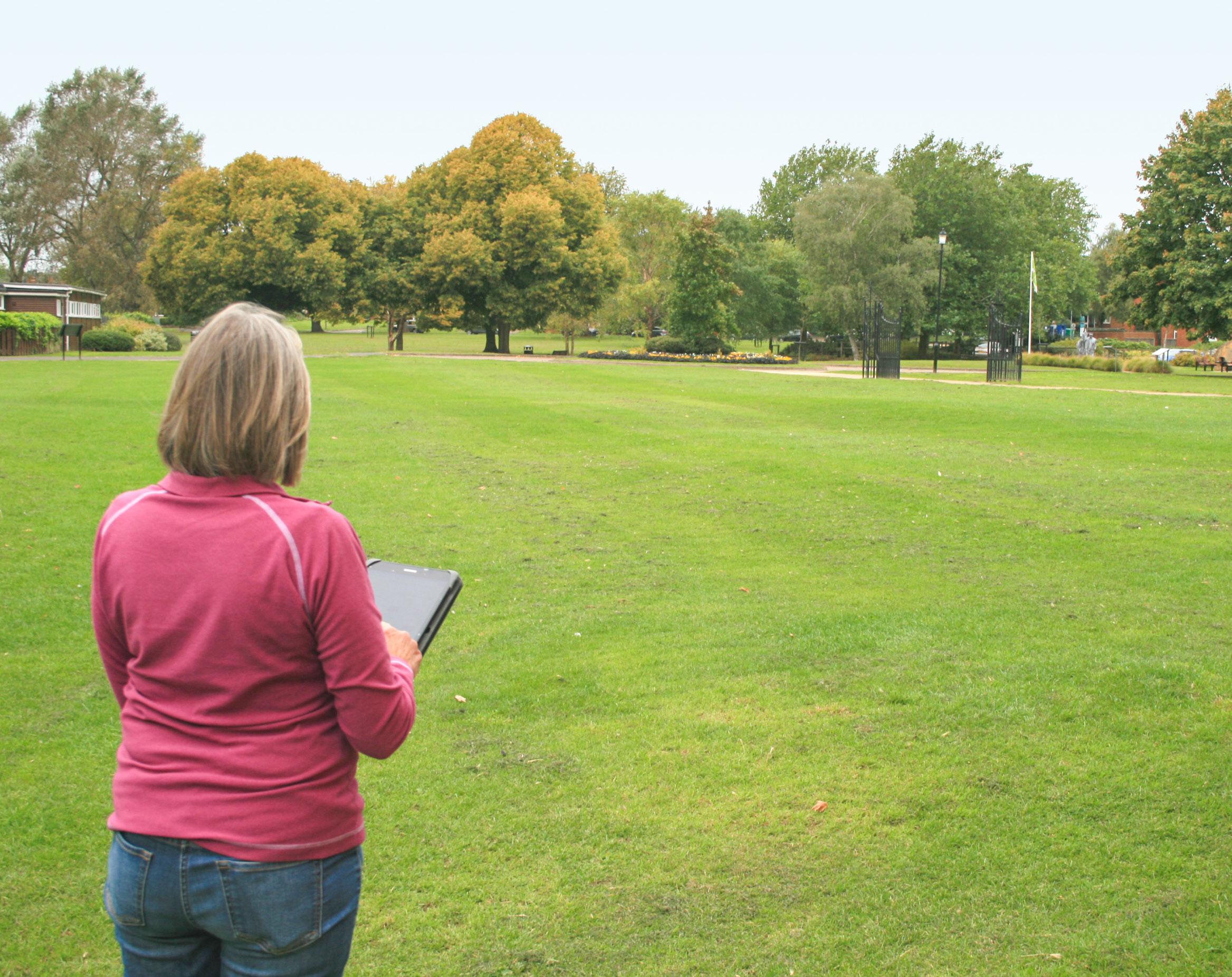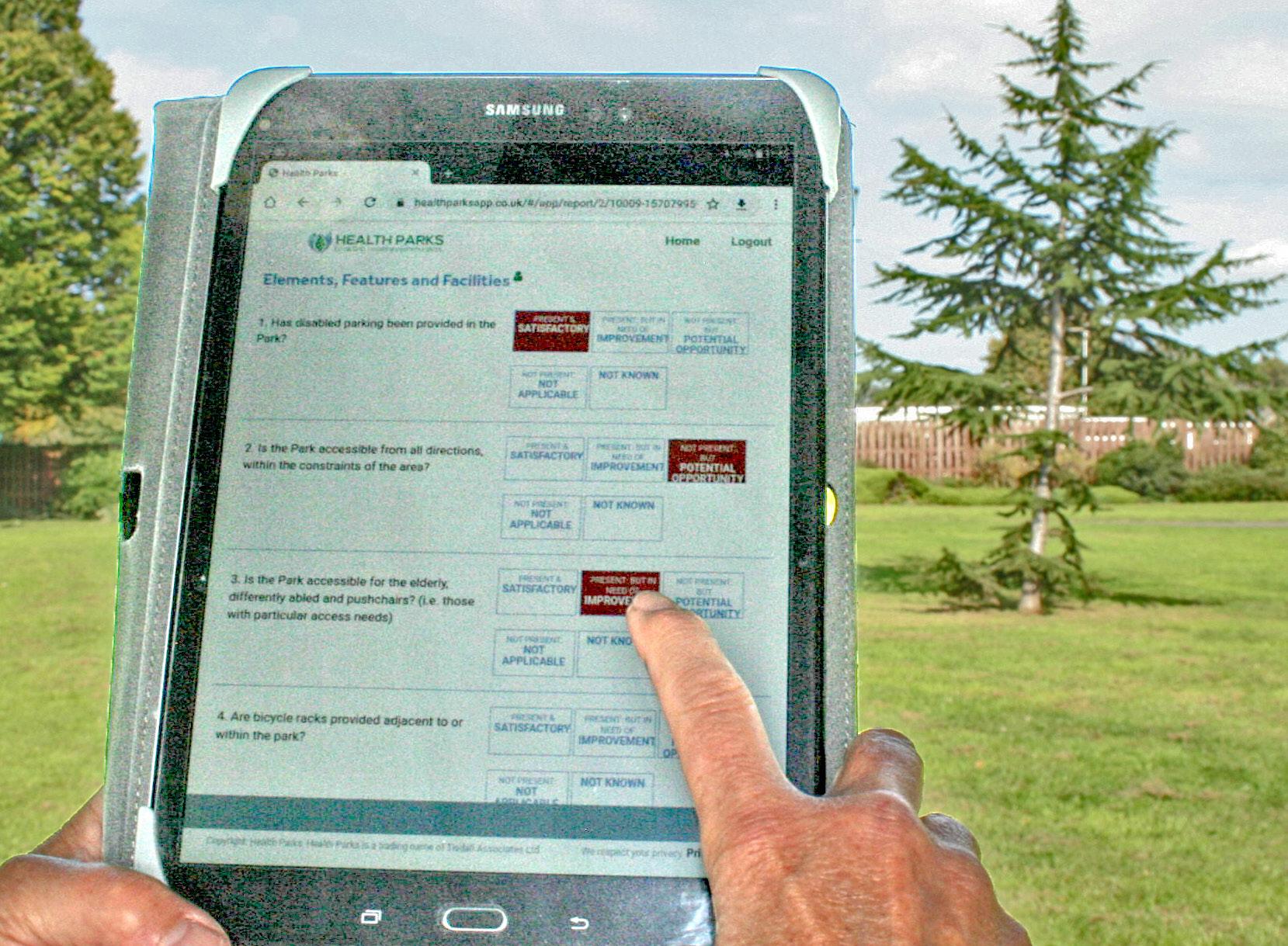
5 minute read
Creating healthy green spaces
Richard Tisdall is Director of Tisdall Associates Ltd
The WHO have recognised the importance of green spaces for health, confirming that “Having access to green spaces can reduce health inequalities, improve wellbeing, and aid in treatment of mental illness...physical activity in a natural environment can also help remedy mild depression and reduce physiological stress indicators.”(1)
Research has demonstrated several health benefits associated with the presence and use of parks(2) . These include:
– Improved mental health,
– Better relaxation and restoration
– Boosted functioning of the immune system
– Enhanced physical activity and improved fitness
– Increased social capital and cohesion
– Improved mental health and cognitive function
– Reduced cardiovascular morbidity and mortality
– Improved pregnancy outcomes
– Reduced mortality and increased life span
The 25 Year Environment Plan(3) acknowledges the importance of the natural environment for health and wellbeing. The steer of the NHS Long Term Plan(4) and Long Term Plan Implementation Framework(5) emphasise the need for Primary Prevention to reduce obesity, avoidable health conditions and mental ill health. A halt in the annual increase in life expectancy over the last decade in the most deprived communities(6), and increasing prevalence of avoidable medical conditions and mental illness, demonstrate the importance of revising our perspective on green spaces and their contribution to health and wellbeing. It is increasingly important that green spaces are appreciated not simply for their amenity value, but specifically for their contribution to health and social cohesion, a “wellbeing” value set at £34.2 billion per year (7) . A number of useful guide lines have been written, not least by the Landscape Institute (8) , but how is health to be delivered in practice? As landscape professionals I believe we have a unique skill set to be able to contribute to this process. Firstly by designing projects for health, and secondly by improving existing green spaces for health.
Recognising the need for a health-based green space assessment model and drawing on qualifications and experience in Environmental Science, Landscape Design and Public Health, Tisdall Associates, a registered practice of the Landscape Institute, has developed the Health Parks Toolkit. Set within the principles of Public Health, the Toolkit is being utilised to provide objective, evidencebased Green Space Health Audits by individuals, charities and councils. It has been developed in liaison with Parks for London and beta tested by Friends Groups and several local authorities.

The Toolkit emanates from a detailed review of scientific evidence. From this, it has been possible to identify key health criteria which have a bearing upon health and wellbeing. These include health promotion, accessibility, mental wellbeing, physical activity and environment and biodiversity. The Toolkit also identifies opportunities for social prescribing. The interpretation of research has identified a series of elements, characteristics and facilities linked to health-promoting green spaces. These form the basis for an online survey covering various aspects of green space. In addition to providing action points and wider recommendations, the Audits provide detailed charts of health status and lists of interventions, identifying elements in the following categories: “Present and Satisfactory”, “In need of Improvement” and “New opportunities”. The first relate to elements and facilities which can be promoted through health promotion initiatives and utilised within social prescribing9. The “Improvements” are actions which can be undertaken to raise the health status of a park within an ongoing management programme. “New Opportunities” are new healthbased interventions which introduce positive enhancements to the park. In considering outcomes, the Full Audits stand alone as useful guides for the enhancement of parks for health. On analysis, combined surveys provide a comprehensive data base which can be identify strengths and weaknesses in health status across a borough. The analysis of data emanating from the Audits allows the creation of Open Space Health Audits. These identify opportunities to integrate parks within the context of Public Health and Primary Prevention. In so doing they provide a basis to increase footfall, and to encourage physical activity, mental wellbeing and social interaction. Green Space Health Strategies have been prepared for the London Boroughs of Lambeth(10), Haringey(11), Islington and Camden(12). The Islington and Camden Green Space Health Strategies have formed an important component of one of the Parks Accelerator Fund, financed by The National Trust and National Lottery Heritage Fund, in conjunction with the DCLG (now the Ministry of Housing, Communities and Local Government). The availability of detailed information from each of the health criteria will allow the interrogation of park data at local, district and national levels, allowing councils to plan ongoing interventions and initiatives for each of their parks and across their boroughs.
The Health Parks Initiative redefines the importance and value of parks and green spaces. It offers a paradigm shift, moving the perception of parks from one of amenity, to a resource for public health. In so doing, it places parks within the context of Primary Prevention creating an opportunity for cooperation between local authorities, public health bodies, the NHS and local community groups. It also provides a basis for local funding bids and new joint funding initiatives, and offers an objective and replicable basis to compare parks across, communities, wards, boroughs and countries.
As a way of supporting the work of the NHS, the Full Audit is currently available at no charge to park charities and local authorities. For details go to the Tisdall Associates website, https:// www.tisdallassociates.co.uk/abouthealth-parks and click on the “Free Appraisal (Full Audit) button to register.
OR email us at info@ tisdallassociates.co.uk.
References
1 WHO, Health and Sustainable Development: Urban Green Space, 2020
2 Braubach M, et al., Effects of Urban Green Space on Environment Health, Equity and Resilience, in Naturebased Solutions to Climate Change Adaption in Urban Areas, Kabisch N, et al., editors, 2017
3 HM Government, A Green Future: Our 25 Year Plan to Improve the Environment, DEFRA, 2018
4 NHS, The NHS Long Term Plan, 2019
5 NHS, NHS Long Term Plan Implementation Framework’ 2019
6 Marmot M, A.J., Boyce T, Goldblatt P, Morrison J, Health equity in England: The Marmot Review 10 years on: Institute of Health Equity, 2020
7 Fields in Trust, Revaluing Parks and Green Spaces Measuring their economic and wellbeing value to individuals, 2018
8 The Landscape Institute, Public Health and Landscapes Creating Healthy Places, 2014
9 The King’s Fund, What is Social Prescribing? 2017’
10 Tisdall RS, Parks and Green Spaces Health Report: Ruskin Park London Borough of Lambeth, 2019, Tisdall Associates Ltd.
11 Tisdall RS, Haringey Green Space Health Strategy Pilot, 2020, Tisdall Associates Ltd.
12 Tisdall RS, Green Space Health Strategy Parks4Health Future Parks Accelerator Project, 2020, London Boroughs of Islington & Camden










